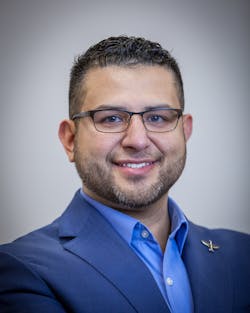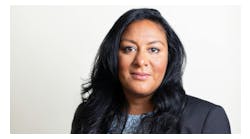Most people are afraid to tackle a topic like this, especially in today’s world. In fact, in the current environment of Black and Brown Lives Matter, it’s important that organizations in our airport and aviation industry come out in support of their mission. At ACS Firm, we have supported all groups of people for the last 10 years and continue to do so, inclusive of the Black and Brown Lives Matter groups. I make this important stand because for us, the issue of color bias toward People of Color (PoC) is not one that can be overlooked. The biases I’m about to discuss have been key contributors to the lack of diversity in leadership in the aviation industry as a whole.
Why do I say there is a lack of diversity? Because there is. According to the July 2019 statistics with the U.S. Census Bureau, the U.S. population amounted to 60.1 percent identifying as White and 42.1 percent identifying as People of Color. That said, one would think that there would be at least 30-40 percent of PoC in leadership roles across the U.S. Airports. Unfortunately, that’s not the case. For the purpose of this article, we at ACS, took a sampling of 100 airports across the country and identified no more than 21 CEO level positions with a person of color in the role. Taking those 21 executives, or 21 percent of the 100 airports, it is far from aligning with the U.S. Census Bureau numbers. In fact, it demonstrates that there’s a true lack of PoC in leadership roles. If we were to examine the top 500 airports, the results would amount to a smaller percentage than 21 percent of PoC in airport leadership roles. That’s the reality we face at present; and it’s in large part to Color Biases.
As we talk about this topic, let’s start at the beginning. What does diversity in people mean? Diversity as a whole has been an evolving topic. Years ago, in the airport and aviation industry, it was largely a focus on People of Color (PoC); that is PoC began to be recognized by their White counter parts in the airport and aviation industry. This recognition started to amount to a very slow move toward inclusion of PoC in leadership roles and business in domestic airports today. As time passed to present day, the idea of diversity and inclusion began to expand to not only PoC, but women, and countless other diverse characteristics in people today. Through this positive evolution, one issue developed, as the topic of diversity became broader over the years, the PoC in leadership roles diminished. The advancements to leadership roles that PoC made, were quickly replaced with Women and other diverse groups, but those diverse groups did not include PoC.
As a tool to help us get started, let’s establish a few definitions that help to set the stage.
· Black/African American:
o Generally used to describe people with darker complexions and those who are descendants from Africa and the African Slave Trade; that said, not all “African American” people identify as Black, some identify with the country they are from, with one example being Jamaican and another example of being Dominican, which is part of the Latin culture.
· White:
o Generally, describes people of lighter complexions who immigrated from Europe.
· Latinx/Hispanic:
o Describes those of Latin American and Spanish descent. The term Latinx, or Latino/Latina is a more inclusive term for the greater amount of Latin American countries; whereas Hispanic largely refers to people from Spain and the original Hispaniola.
· Brown:
o Used to describe people who do not identify as Black or White. It combines all other Persons of Color (Latinx, Middle Eastern, Native American Indian, Asian).
· People of Color:
o Used today to describe any person who is not considered White. This title is inclusive of Blacks/African Americans, Latinx/Hispanics, Asians, Native American Indians, Pacific Islanders, Middle Eastern, and multiracial people.
· White Privilege:
o Refers to the unquestioned and unearned set of advantages, entitlements, benefits and choices bestowed on people solely because they are White. Generally, White people who experience such privilege do so without being conscious of it.
Throughout the remainder of this article, I’ll share generally and specifically, how color biases have contributed to systemic oppression and how that has set the foundation for inequality for People of Color in the airport and aviation industry. I’ll go further by addressing how it has been used in the industry. And, I’ll offer you more of what is to come while sharing some additional educational tools for those who are interested in learning more about the topic.
Systemic Oppression and Biases toward People of Color
What exactly is systemic oppression? According to the National Equity Project, systemic oppression is the result of systemic laws, practices and actions that resulted in “…the intentional disadvantage of a group of people based on their identity while advantaging members of the dominant group, whether it be gender, race, class, sexual orientation, language, etc.” The more I read this definition, the more I agreed with it. I think the key word that justifies this statement is “resulted.” As we’ll learn in a later article, the laws and regulations that were created were setup with good intentions. It’s only after the fact, certain people and groups, worked to make the end result something different than the original intention. That “different result” I speak of is where color bias comes in.
Color bias has been used as a way to oppress people of color for some time. It has largely been used to apply stereotypes to groups of PoC, whether it was realized or not. I say whether realized or not because there are both Explicit and Implicit Biases at work here. According to the Perception Institute, “Explicit Bias refers to the attitudes and beliefs we have about a person or group on a conscious level. Much of the time, these biases and their expression arise as the direct result of a perceived threat. When people feel threatened, they are more likely to draw group boundaries to distinguish themselves from others.” It is important to know that those Explicit Bias boundaries have been used for decades against PoC, particularly when it comes to recruitment and selection of the number one position in airports and aviation.
As we examine Implicit Biases, the Perception institute describes it as “when we have attitudes towards people or associate stereotypes with them without our conscious knowledge. A fairly commonplace example of this is seen in studies that show that White people will frequently associate criminality with black people without even realizing they’re doing it.” This is a great example of its impacts, because that Implicit Bias of Black People = Criminals is perpetuated in the recruitment and selection process where it turns into an Explicit Bias against a Black person and that person is not selected for the role.
Another factor is how the subjectivity of position requirements plays a strong role as an Explicit Bias. As an executive recruiter and in the room with decision makers and selection panelists, I have personally experienced where I’ve been asked to “loosen” the requirements so that they are able to select based on the “right fit” for the organization. I’ve worked with clients to solidify as detailed descriptions as we could, while counseling against the “loosening” of requirements for fear of attracting the wrong type of candidate as well as the simple fact that it’s wrong to do.
An example of biases at work has also come into play during a facilitated deliberation of the final two candidates. As I lead the deliberation, I asked the selection committee, let’s discuss how the candidates meet the qualifications as we initially outlined.
Candidate A: Cultural fit; Polished; Knows us and the industry; great financial background.
Candidate B: Looks folksy; Speaks well; Seems knowledgeable; Seems to get financials.
If I asked you to pick which was the White and which was the Person of Color, what would your guess be? Well, Candidate A = White and Candidate B = Person of Color. As we examine the differences, look at the descriptors for each person. Cultural Fit versus Looks Folksy; one is more professional and positive than the other. As we examine the words Polished and Speaks well; why does the Person of Color speak well as opposed to Polished or Professional Presentation or some other positive statement? When a Person of Color is labeled as “speaks well,” it implies that other PoC do not speak well and that’s not the case. In my experience, a White person has not been described as such; they’ve been described as polished, politically astute, excellent communicator. These are examples of Implicit Biases at work. They work to oppress in the littlest of ways, but ways that still matter.
The final topic covers ones’ own discomfort around diversity and PoC; this is an issue of personal insecurity. If a White person is uncomfortable with a PoC, that White person may lack the ability to adjust to new environments and new people. I’ve interviewed hundreds of executives over the years through the executive search services ACS Firm leads for our clients. During the interviews, we ask a battery of questions around deep topics of interest to our clients; some of the topics revolve around diversity. It’s easy to tell who is comfortable with diversity or PoC and those who are not. One key indicator is how diverse groups are described. I’ve had a few executives say, “we don’t have much diversity here.” When asked about business diversity, other executives have attempted to describe two separate groups and compare populations of each me. Typically, the next thought from them is that those PoC groups “are not as qualified as the other firms.” To that I say, well, at one point, the “other firms” were as qualified as the PoC firms you’re evaluating now. Just because the other firm has been around a bit longer, doesn’t make the PoC firm any less qualified to do the work you’re asking them to do for you today. That said, the uncomfortable presentation the executives shared was a clear indicator that they were uncomfortable with diversity and PoC. So, rather than adapt and grow comfortable, they would simply choose the firm they are more comfortable with, which happens to be a firm that looks more like them. Now this uncomfortable feeling they have is a personal insecurity and it’s an Implicit Bias that works against the PoC. Is that fair? Is it right? No, it’s wrong on both accounts. The Federal Aviation Administration sets Disadvantaged Business Enterprise and Minority Business Enterprise goals to be met. They provide airports millions of dollars to offer opportunities to those groups, not for airports to request waivers because of an Implicit Bias.
So, why is all of this important now? Well, our country is at a crossroads; for many years, Explicit and Implicit Biases have been allowed to continue while disadvantaging PoC. It’s one of the many reasons the Disadvantaged Business Enterprise program was developed. But, now with the cultural unrest our country is dealing with, we need to do what’s right all the time, and not when it’s convenient to check a box.
That said, Implicit Bias and sometimes Explicit Bias are White Privilege at its root form. Collectively, the various Implicit Bias examples I’ve covered are not actions that happen to White People. It’s the advantage of being a White person in the United States. Now some may have a hard time getting their head around the idea of White Privilege, but in its most simple form, it’s not having to worry if there is going to be a person of color on the interview panel as you interview for the Airport Director position in rural America. It’s not having to worry about being stopped by law enforcement while out for a run in your affluent neighborhood just because you’re a PoC. It’s not being described as “appearing to speak well” during the interview or having a statement from one of the interviewers saying, “her hair looked unkept.” It’s important to note that the female PoC was simply wearing her natural hair in a professional manner and executive dress attire to the interview with what turned out to be an all-White selection committee.
As you reflect on this article and your work lives, I ask you to think about how this applies to you and your organization. Are you in a position to hire a PoC? Are you comfortable engaging with PoC? Well, the more People of Color in leadership roles throughout the United States, the more comfortable everyone will be. This issue doesn’t need to be an exception but should be the new normal for our industry. We’re in a great position with many eager professionals ready to take the lead of divisions and organizations; they just have to be given a fair shot without the Explicit or Implicit Bias. If there were more people in leadership roles doing the right thing, the U.S. Census Bureau statistics would align much better than what we are showing as an industry. We need to do better and I know we can.
As we look ahead, this important topic of Bias and Privilege in the airport and aviation industry isn’t only grounded in your actions or inactions, there is more to the story, but this is one piece of it. In a future article I’ll cover the effects from legal actions, policy intensions and the establishment of standards and how Explicit Biases have turned those good intensions into poor impacts for PoC. I’ll also share how legal actions have been used for and against PoC. And lastly, I’ll share what each of you can do to turn this systemic oppression issue around. It’s well past the time to treat everyone fairly, equitably and just to do the right thing.
If you’re interested in more, there’s a lot of great material on the topics I’ve covered on the internet, YouTube, Netflix, etc. It’s all a matter of how much do you want to learn on the topic. I will share some of my favorites for you.
You can find the links to each of these on our website at: www.ACSFirm.com/resources
1) Netflix
a. Documentary Titled: Hello Privilege. It’s Me Chelsea
i. By Comedian Chelsea Handler
2) YouTube
a. Series Titled: Uncomfortable Conversations with a Black Man
i. By Emmanuel Acho
b. Animated Short: Systemic Racism Explained
i. By Act.TV
c. NBC Interview: Explained: White Privilege, Systemic Racism and Implicit Bias
i. By NBC 10 Philadelphia
3) In the end, if none of these cut it for your or you’d like to learn more, feel free to reach out to me and I’ll be happy to share additional insights. After all, diversity and inclusion are what we do and are a large part of why I started ACS a decade ago.
Eric Mercardo founded ACS to offer an improved service experience for the industry. He leads the firms service lines of Assessments, Adult Learning, Diverse Recruiting and Outplacement Services. Celebrating 10 years in business, ACS is “Elevating the Industry!”





